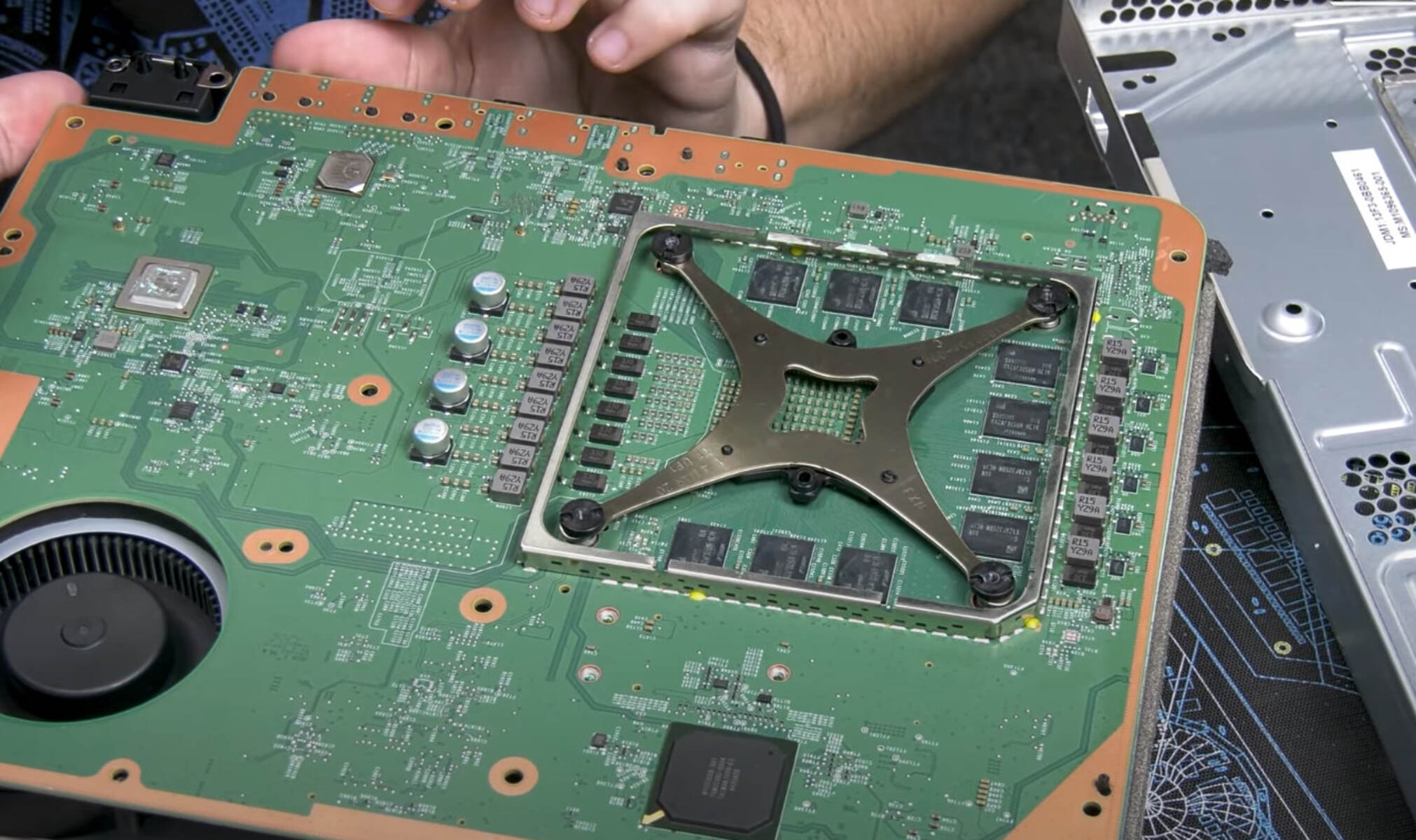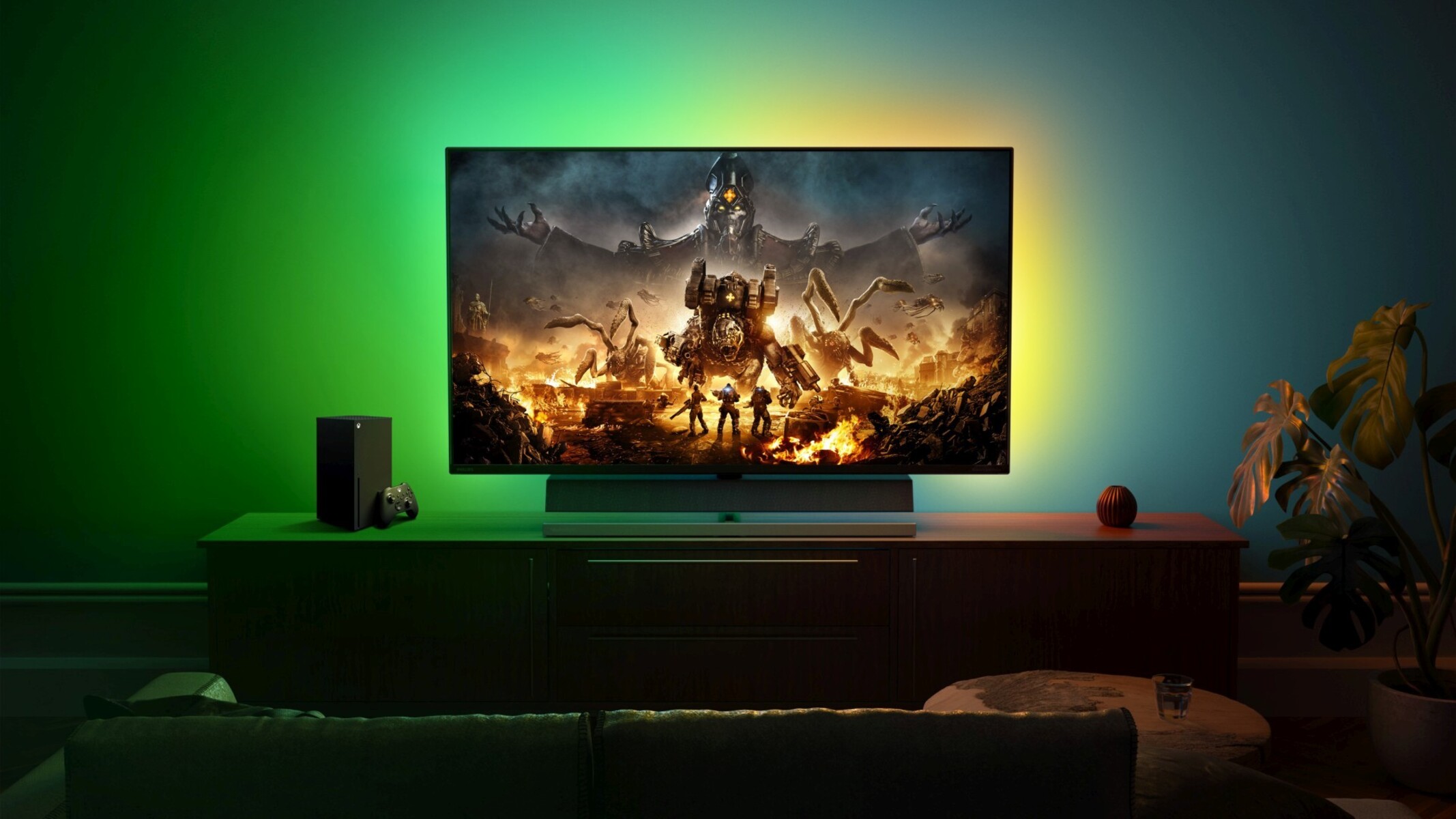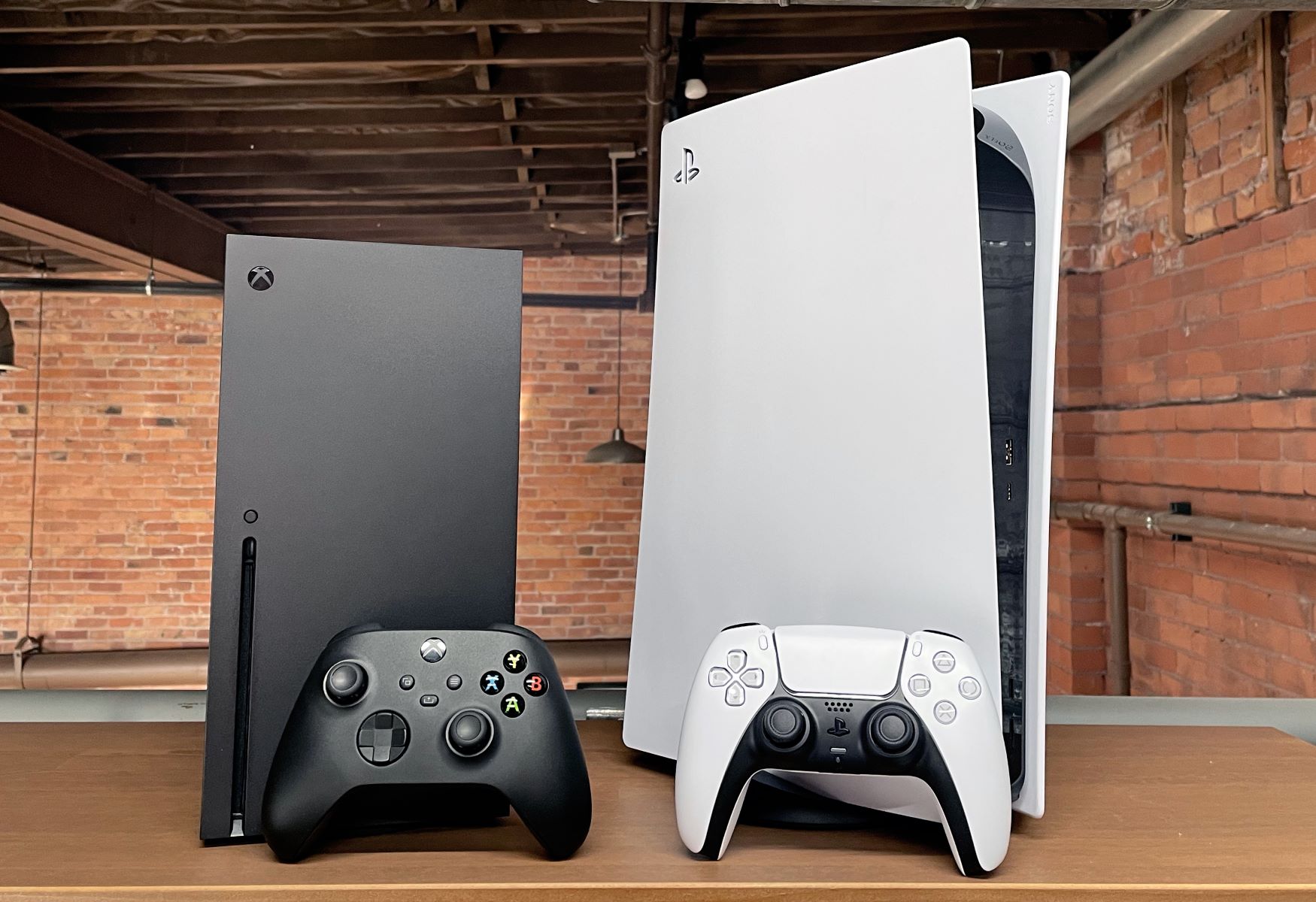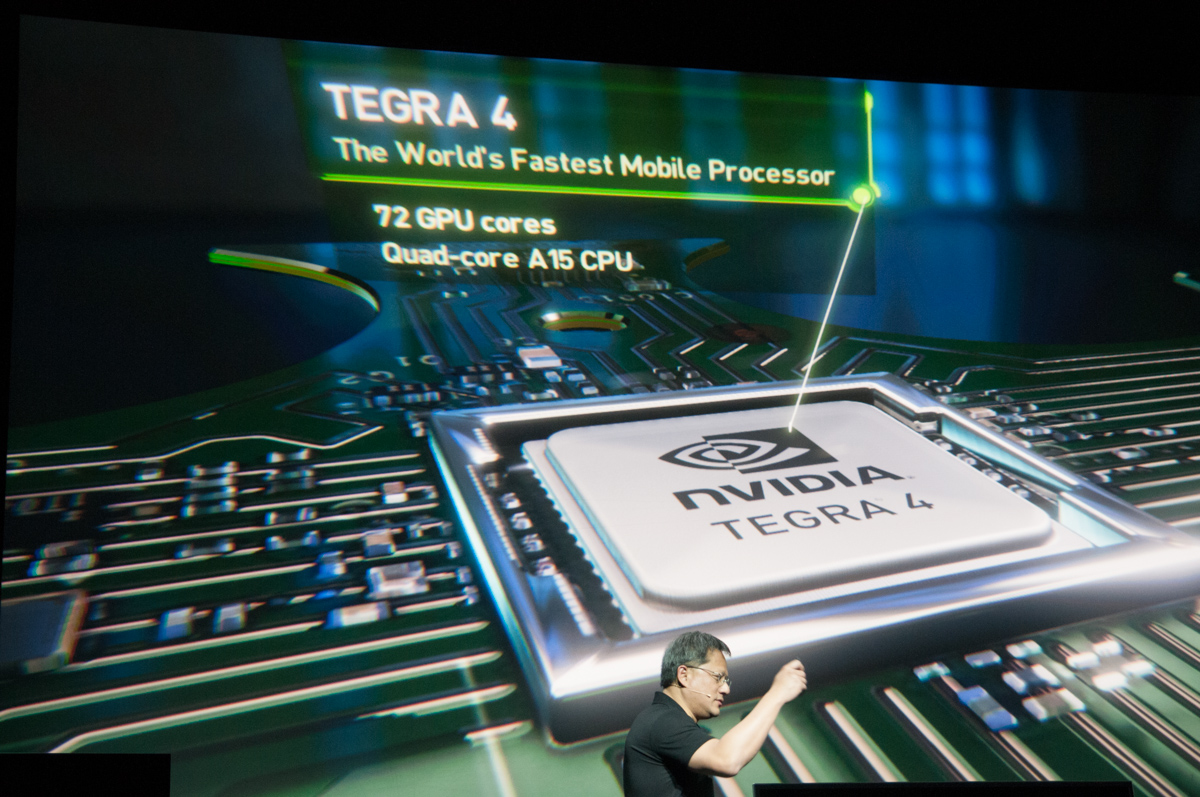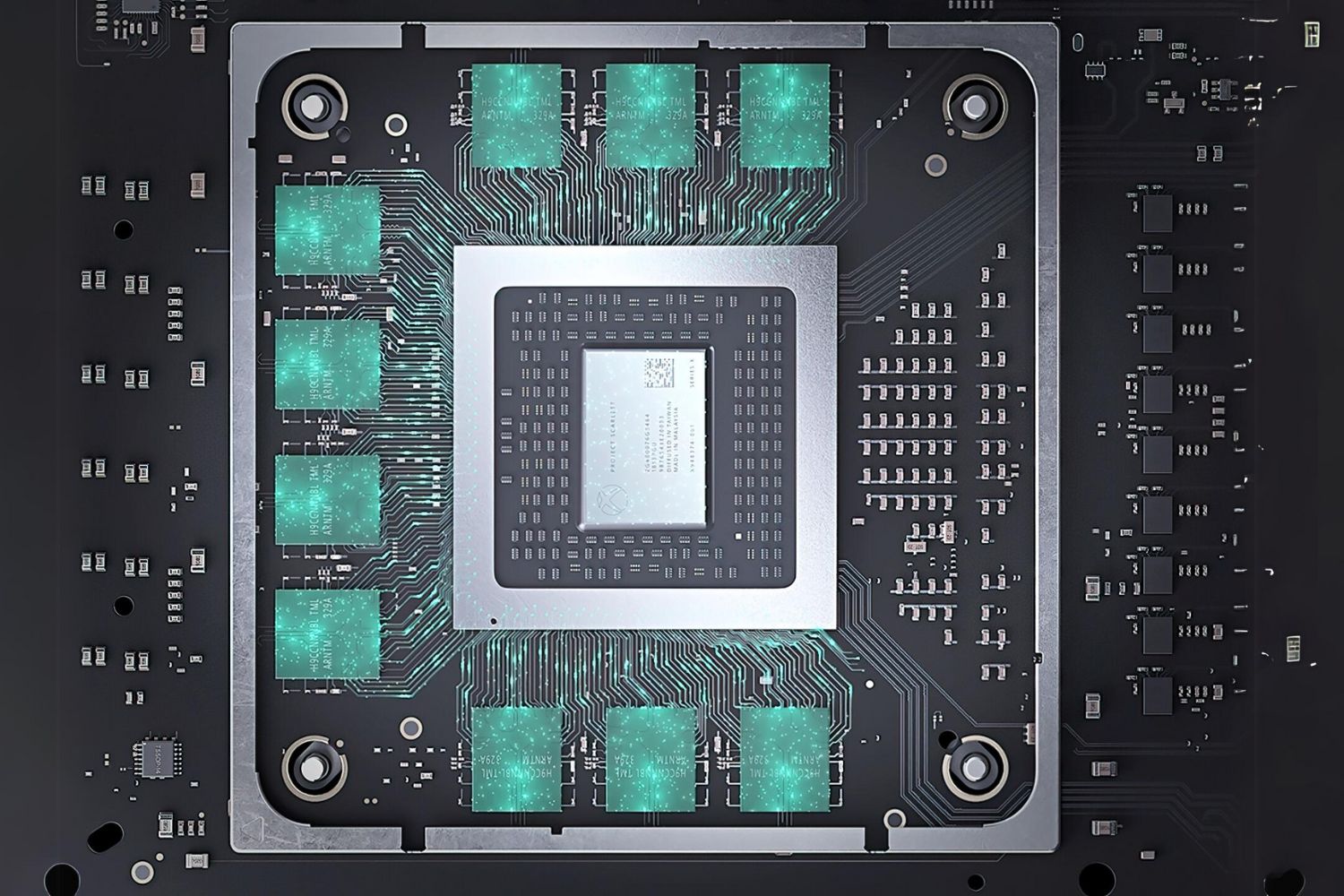Overview of Xbox Series X Graphics Card
The Xbox Series X, the latest gaming console from Microsoft, is equipped with a powerful and advanced graphics card that takes gaming to the next level. The graphics card plays a crucial role in delivering stunning visuals, realistic textures, and smooth gameplay, making it a vital component for gamers.
A graphics card, also known as a video card or GPU (Graphics Processing Unit), is responsible for rendering and displaying images, videos, and graphics on the screen. It is specifically designed to handle complex calculations and processing tasks required for gaming graphics.
The Xbox Series X graphics card is built on AMD’s latest architecture, leveraging the RDNA 2 technology. It features 12 teraflops of computing power, making it twice as powerful as the previous generation Xbox One X. This immense power allows the console to deliver true 4K gaming at 60 frames per second, with the potential for even higher frame rates.
One of the standout features of the Xbox Series X graphics card is its support for hardware-accelerated ray tracing. This revolutionary technology simulates the behavior of light in real-time, resulting in stunningly realistic lighting, reflections, and shadows. With ray tracing, game worlds come to life with enhanced visual fidelity, immersing players in a more realistic and immersive gaming experience.
In addition to ray tracing, the graphics card also supports variable rate shading (VRS), which allows developers to prioritize the allocation of GPU resources to different parts of the screen. This technique enhances performance by reducing the GPU workload for less noticeable areas while maintaining high-quality visuals in crucial areas of the game.
With its powerful graphics card, the Xbox Series X not only offers incredibly detailed and realistic graphics but also enables faster load times and smoother gameplay. The graphics card works seamlessly with the console’s high-speed SSD, resulting in reduced loading times and quick resume features.
The Xbox Series X graphics card represents a significant leap forward in graphical capabilities, pushing the boundaries of gaming visuals and immersion. With its immense computing power, hardware-accelerated ray tracing, and support for advanced features, it sets new standards for console gaming. Whether you’re exploring vast open worlds or engaging in fast-paced multiplayer battles, the Xbox Series X graphics card ensures that every gaming moment is visually stunning and truly captivating.
What is a Graphics Card?
A graphics card, also known as a video card or GPU (Graphics Processing Unit), is an essential component of a computer system that is specifically designed to handle and process visual data, such as images, videos, and graphics. It is responsible for rendering these visuals and displaying them on the screen.
Graphics cards are crucial for tasks that require high-performance graphics processing, such as gaming, video editing, 3D modeling, and visual simulations. They work in conjunction with the computer’s CPU (Central Processing Unit) to accelerate the rendering of graphics and alleviate the processing burden on the CPU.
At its core, a graphics card consists of a processor, memory, and various other components that work together to perform complex calculations and processes necessary for generating and rendering images. The processor, known as the GPU, is the most critical component as it performs the bulk of the visual processing tasks.
The GPU is designed to handle parallel processing, allowing it to perform multiple calculations simultaneously. This parallel processing capability makes graphics cards highly efficient at rendering complex graphics in real-time, delivering smooth and realistic visuals, especially in gaming scenarios where the constant output of frames per second is crucial.
In addition to the GPU, graphics cards also have dedicated video memory, known as VRAM (Video Random Access Memory). VRAM is used to store data and textures that need to be rendered on the screen. The large VRAM capacity and fast access speeds enable the GPU to quickly retrieve and process the necessary information, resulting in improved performance and smoother graphics rendering.
Modern graphics cards have advanced features and technologies to enhance visual quality and optimize performance. These include support for high resolutions, multiple monitor setups, advanced shading techniques, and hardware acceleration for tasks such as ray tracing.
Overall, the graphics card is an integral component in any computer system, especially for tasks that require high-quality graphics and real-time rendering. Whether you’re a gamer looking for immersive gaming experiences, a content creator working on visual projects, or simply a user who appreciates crisp and detailed visuals, a powerful graphics card is essential for delivering stunning visuals and elevating your overall computing experience.
Importance of Graphics Card in Gaming
The graphics card plays a pivotal role in gaming, as it directly impacts the visual quality, performance, and overall gaming experience. Here are some reasons why a powerful graphics card is vital for gaming:
1. Enhanced Visuals: A high-quality graphics card can generate incredibly detailed and realistic visuals, bringing game worlds to life. From lush landscapes to intricate character animations, a powerful graphics card ensures that every aspect of the game is visually stunning, immersing players in a captivating gaming experience.
2. Smooth Gameplay: Gaming requires fast and responsive visuals to ensure smooth gameplay. A graphics card with sufficient processing power can render game frames quickly and deliver them to the monitor in a smooth and seamless manner. This results in a more responsive gaming experience, with reduced input lag and enhanced fluidity during fast-paced action.
3. Higher Frame Rates: Frame rate is a critical factor in gaming, as it determines how many frames per second (fps) are displayed. A powerful graphics card can handle higher frame rates, allowing games to run at 60 fps, 120 fps, or even higher. Higher frame rates result in smoother animations and more fluid gameplay, providing a competitive advantage for gamers.
4. Support for High Resolutions: Gaming at high resolutions, such as 4K or even 8K, requires a graphics card with enough power to handle the increased pixel count. With a powerful graphics card, gamers can enjoy games in stunning detail and clarity, with sharp textures, crisp edges, and vibrant colors.
5. Advanced Graphics Technologies: Graphics cards often come equipped with advanced technologies and features that enhance the visual experience. This includes support for hardware-accelerated ray tracing, which adds realistic lighting, reflections, and shadows to game environments. Additionally, graphics cards may support technologies like VSync, anti-aliasing, and anisotropic filtering, further improving image quality and reducing visual artifacts.
6. Future-Proofing: Investing in a high-performance graphics card ensures that your gaming rig is prepared for future game releases. As games continue to become more graphically demanding, a powerful graphics card can handle upcoming titles with ease, allowing you to enjoy the latest games at their maximum settings without the need for frequent hardware upgrades.
Overall, the graphics card is a crucial component for gaming enthusiasts, as it directly impacts the visual fidelity, performance, and overall enjoyment of games. By investing in a powerful graphics card, gamers can immerse themselves in stunning visuals, experience smoother gameplay, and stay at the forefront of the gaming industry’s advancements.
Specifications of Xbox Series X Graphics Card
The Xbox Series X boasts a powerful graphics card that sets new standards for console gaming. Here are the specifications of the Xbox Series X graphics card:
Architecture: The graphics card in the Xbox Series X is built on AMD’s latest architecture, utilizing RDNA 2 technology. This architecture provides significant performance improvements, delivering stunning visuals and enhanced gameplay experiences.
Teraflops: The Xbox Series X graphics card packs an impressive 12 teraflops of computing power. This immense processing power allows for realistic graphics, high resolutions, and smooth gameplay.
Cores: The graphics card features 52 compute units, each running at a clock speed of 1.8 GHz. These cores are responsible for handling the complex calculations and rendering tasks required for delivering immersive gaming experiences.
Memory Bandwidth: The Xbox Series X graphics card utilizes GDDR6 memory technology with a memory bandwidth of 10 GB/s. This high memory bandwidth ensures fast data transfer, enabling quick and seamless rendering of graphics and textures.
Resolution Support: The graphics card supports native 4K resolution, allowing for incredibly detailed visuals. It is also capable of upscaling content to 8K resolution, providing a future-proofed gaming experience for users with compatible displays.
Variable Rate Shading (VRS): The graphics card supports VRS, which allows developers to prioritize GPU resources on specific parts of the screen. This innovative technology enhances performance by focusing rendering power on important areas while reducing the workload in less critical regions, resulting in improved frame rates and overall gaming performance.
Ray Tracing Capabilities: The Xbox Series X graphics card features dedicated hardware-accelerated ray tracing support, enabling realistic lighting, reflections, and shadows in real-time. This technology adds a new level of visual fidelity to games, creating more immersive and visually stunning environments.
DirectX Support: The graphics card fully supports the latest DirectX versions, providing developers with advanced tools and features to create visually impressive games. DirectX enhances rendering capabilities, allowing for more realistic graphics and improved performance.
Overall, the specifications of the Xbox Series X graphics card highlight its immense power and advanced capabilities. From high-resolution gaming to hardware-accelerated ray tracing, the graphics card delivers exceptional visual quality and performance, ensuring that gamers have an unparalleled gaming experience on the Xbox Series X console.
Comparison with Previous Xbox Graphics Cards
The Xbox Series X graphics card represents a significant leap forward compared to its predecessors, offering substantial improvements in performance and visual capabilities. Let’s compare the Xbox Series X graphics card with the graphics cards of previous Xbox consoles:
Xbox One X Graphics Card: The Xbox One X, the previous flagship console from Microsoft, featured a graphics card with 6 teraflops of computing power. In contrast, the Xbox Series X graphics card offers double that amount, boasting an impressive 12 teraflops. The increased teraflops result in improved graphics rendering, higher frame rates, and enhanced visual fidelity for Xbox Series X games.
Xbox One Graphics Card: The original Xbox One console relied on a graphics card with 1.31 teraflops of power. Compared to this, the Xbox Series X graphics card is almost ten times as powerful. The increased processing capability of the Series X graphics card means that games can deliver much more realistic visuals, higher resolutions, and smoother gameplay.
Ray Tracing Technology: One of the standout features of the Xbox Series X graphics card is its dedicated hardware-accelerated ray tracing support. None of the previous Xbox consoles had this capability. Ray tracing technology adds a new level of visual realism to games by simulating how light interacts with objects in the virtual environment. This results in stunning lighting effects, accurate reflections, and realistic shadows, significantly enhancing the overall visual quality.
Memory Bandwidth and Speed: The Xbox Series X graphics card utilizes GDDR6 memory technology with a memory bandwidth of 10 GB/s. This represents a substantial improvement over the memory bandwidth of previous Xbox graphics cards. The increased memory bandwidth allows for faster data transfer between the graphics card and the system, enabling quicker loading times and seamless rendering of vast game worlds.
Performance Optimization: The Xbox Series X graphics card introduces several advanced technologies to optimize performance. Variable Rate Shading (VRS) is one such feature that dynamically adjusts the level of detail in different parts of the screen. This optimization helps allocate GPU resources more efficiently, resulting in improved performance and image quality. The previous Xbox graphics cards did not have this advanced performance optimization technology.
Overall, the Xbox Series X graphics card is a substantial upgrade from its predecessors, providing a significant boost in computing power, visual capabilities, and performance optimizations. With its enhanced teraflops, support for ray tracing, improved memory bandwidth, and advanced performance features, the Xbox Series X graphics card ensures that gamers can enjoy breathtaking visuals and immersive gaming experiences like never before.
Ray Tracing Technology in Xbox Series X Graphics Card
The Xbox Series X graphics card introduces a groundbreaking feature called hardware-accelerated ray tracing, which revolutionizes the way games look and feel. Ray tracing is a rendering technique that simulates the behavior of light in real-time, resulting in more realistic lighting, reflections, and shadows. Here’s how ray tracing technology enhances the visual experience on the Xbox Series X:
Realistic Lighting: Ray tracing enables accurate rendering of lighting in games. Lights behave realistically, casting shadows and bouncing off objects to create lifelike illumination. With ray tracing, light sources can accurately simulate their physical properties, bringing an unprecedented level of realism to game environments. Whether it’s the glow of sunlight filtering through trees or the flickering of a candle flame, realistic lighting enhances immersion and makes game worlds more believable.
Accurate Reflections: Reflections play a crucial role in creating a realistic and immersive gaming experience. With ray tracing, surfaces and objects can accurately reflect their surroundings, whether it’s the shimmer of water, the reflection of a character on a shiny surface, or the mirror-like reflections on a polished floor. These realistic reflections add depth and detail to game visuals, creating a more immersive and visually stunning environment.
Dynamic Shadows: Shadows in games rendered with ray tracing are incredibly realistic. As light sources and objects move, shadows dynamically change in shape, size, and intensity. This level of accuracy enhances the overall visual quality, making objects in the game world feel grounded and adding depth to scenes. Realistic shadows not only improve visual fidelity but also create a sense of realism, further immersing players in their gaming experience.
Global Illumination: Ray tracing enables global illumination, which mimics how light bounces off surfaces and affects their surroundings. This feature allows for indirect lighting to be accurately simulated, enhancing the overall atmosphere and visual quality of the game. Global illumination adds another layer of realism to game environments by realistically illuminating objects that are not directly in contact with a light source.
Efficient Use of GPU Resources: The Xbox Series X graphics card’s hardware-accelerated ray tracing technology optimizes the usage of GPU resources, allowing developers to implement more advanced visual effects without sacrificing performance. The dedicated hardware for ray tracing offloads the demanding calculations from the GPU, ensuring smooth and fluid gameplay even with the added visual enhancements.
Overall, ray tracing technology on the Xbox Series X graphics card delivers unparalleled visual realism, immersing players in a more lifelike and captivating gaming experience. By accurately simulating lighting, reflections, shadows, and global illumination, ray tracing transforms game worlds into stunning, visually-rich environments. With the Xbox Series X, players can enjoy games that look and feel incredibly realistic, creating an unmatched level of immersion and excitement.
Performance and Gaming Experience with Xbox Series X Graphics Card
The Xbox Series X graphics card delivers exceptional performance, pushing the boundaries of console gaming and providing an unparalleled gaming experience. With its powerful hardware and advanced features, it sets new standards for performance, visuals, and gameplay. Here’s a look at how the Xbox Series X graphics card enhances the gaming experience:
Immense Computing Power: With 12 teraflops of computing power, the Xbox Series X graphics card offers immense processing capability. This power enables games to run at higher resolutions, deliver more detailed graphics, and achieve smoother performance. The increased teraflops translate into faster rendering times, improved frame rates, and a more immersive gaming experience.
True 4K Gaming: The Xbox Series X graphics card supports native 4K gaming resolution, delivering stunning visuals with sharp details and vibrant colors. Games can be enjoyed with an unprecedented level of clarity and realism, immersing players in visually breathtaking worlds. The combination of high resolution and powerful graphics processing ensures a truly captivating gaming experience.
High Frame Rates: The Xbox Series X graphics card allows games to run at higher frame rates, resulting in smoother, more responsive gameplay. With support for up to 120 frames per second, games feel incredibly fluid and deliver highly responsive controls. The increased frame rates improve the overall gaming experience, especially in fast-paced action games, where every frame counts.
Quick Load Times: The Xbox Series X graphics card, paired with the high-speed SSD, significantly reduces load times. Games load faster, allowing players to jump into their gaming sessions within seconds. Quick resume features also leverage the graphics card’s performance, allowing players to seamlessly switch between multiple games without sacrificing performance or losing progress.
Enhanced Visual Fidelity: In addition to raw power, the Xbox Series X graphics card incorporates advanced features like ray tracing and variable rate shading. Ray tracing technology adds realistic lighting, reflections, and shadows, resulting in more visually stunning and lifelike game environments. Variable rate shading optimizes performance by allocating GPU resources intelligently, ensuring that games maintain high-quality visuals without sacrificing frame rates.
Backward Compatibility: The Xbox Series X graphics card not only enhances the performance of the latest games but also provides improved graphics and smoother gameplay on backward-compatible titles from previous Xbox consoles. With the power of the graphics card, older games are upscaled and enhanced, benefiting from higher resolution, improved frame rates, and faster load times.
Overall, the Xbox Series X graphics card delivers exceptional performance and elevates the gaming experience to new heights. With its immense computing power, support for true 4K gaming, high frame rates, quick load times, advanced visual features, and backward compatibility, the Xbox Series X graphics card pushes the boundaries of what is possible in console gaming, ensuring that every gaming moment is immersive, responsive, and visually stunning.
Future of Graphics Cards in Gaming
The future of graphics cards in gaming holds exciting possibilities, as technological advancements continue to push the boundaries of visual fidelity and immersive gameplay. Here are some key trends and developments that we can expect to see in the future of gaming graphics cards:
Ray Tracing Advancements: Ray tracing technology is still in its early stages, and we can anticipate significant advancements in the future. As hardware and software optimizations continue to evolve, ray tracing will become more accessible and refined, resulting in even more realistic lighting, reflections, and shadows. Games will achieve new levels of visual fidelity, providing immersive experiences that blur the line between the real world and the virtual one.
Higher Resolutions and Refresh Rates: As display technology advances, graphics cards will need to support higher resolutions, such as 8K and beyond, to meet the demands of evolving gaming setups. Additionally, higher refresh rates, beyond the current standard of 120Hz, will become more common, further enhancing the smoothness and responsiveness of gameplay.
Artificial Intelligence Integration: Graphics cards will increasingly leverage artificial intelligence (AI) to enhance gaming experiences. AI-powered techniques, such as machine learning and deep learning, can be utilized to improve graphics processing, optimize performance, and enhance visual effects. AI-powered upscaling can also enhance older games, allowing them to take advantage of higher resolutions and more advanced graphics capabilities.
Real-Time Global Illumination: While current ray tracing technology already offers impressive global illumination effects, future graphics cards may further refine this aspect. Real-time global illumination algorithms can simulate how light interacts and bounces off surfaces on a more comprehensive scale, resulting in more accurate and visually stunning lighting effects in virtual environments.
Virtual Reality (VR) Optimizations: The popularity of virtual reality gaming continues to grow, and future graphics cards will undoubtedly focus on optimizing performance for VR experiences. This includes improved rendering techniques, reduced latency, and increased resolution support, allowing for even more immersive and realistic virtual worlds.
Cloud-Based Gaming: The rise of cloud gaming services opens up new possibilities for graphics cards. With powerful cloud-based systems handling the majority of processing tasks, even lower-end devices can deliver high-quality graphics and performance. Graphics cards will be integral to the cloud gaming infrastructure, ensuring that gamers can access demanding, visually impressive games on a wide range of devices.
Energy Efficiency and Sustainability: As technology advances, graphics cards will likely focus on improving energy efficiency to reduce power consumption and heat generation. Companies will continue to develop sustainable practices and technologies, ensuring that gaming hardware aligns with environmental concerns while delivering exceptional performance.
The future of graphics cards in gaming is bright, promising enhanced visual experiences, more immersive gameplay, and innovative advancements. From improved ray tracing to higher resolutions, real-time global illumination, optimizations for virtual reality, and the expansion of cloud gaming, graphics cards will continue to play a pivotal role in pushing the boundaries of gaming technology and delivering breathtaking experiences for gamers worldwide.
Conclusion
The graphics card is undeniably a vital component in the world of gaming. It significantly impacts the visual quality, performance, and overall gaming experience. The Xbox Series X graphics card, with its immense computing power, advanced features, and support for technologies like ray tracing, has set a new benchmark for console gaming.
The Xbox Series X graphics card delivers stunning visuals, with true 4K gaming, higher frame rates, and realistic lighting, reflections, and shadows. It brings game worlds to life, immersing players in visually captivating environments. The immense processing power ensures smooth gameplay, reduced loading times, and an overall enhanced gaming experience.
The future of graphics cards in gaming holds promising developments. Ray tracing technology will continue to evolve, bringing even more realistic graphics and lighting effects. Higher resolutions, faster refresh rates, and AI integration will further elevate the visual fidelity and performance of games. The increasing popularity of virtual reality gaming will drive optimizations for VR experiences, while cloud-based gaming services will expand access to demanding titles on various devices.
In addition to technological advancements, energy efficiency and sustainability will be crucial considerations for future graphics cards, aligning gaming hardware with environmental concerns.
As gamers, we can look forward to an exciting future where graphics cards continue to push the boundaries of gaming technology. Whether it’s experiencing breathtaking visuals, immersing ourselves in realistic game worlds, or enjoying seamless and responsive gameplay, the graphics card will play a central role in delivering exceptional gaming experiences.
With the Xbox Series X graphics card and the ongoing innovations in the gaming industry, we can expect more immersive, visually stunning, and captivating games that push the limits of our imagination and provide endless hours of excitement and enjoyment.










